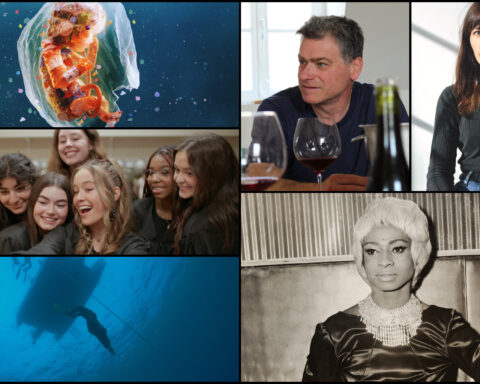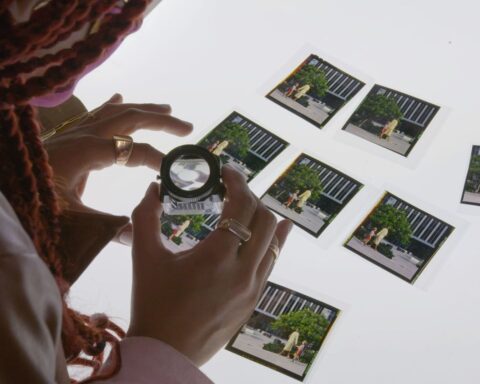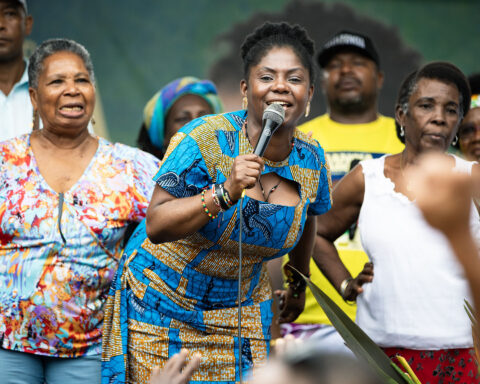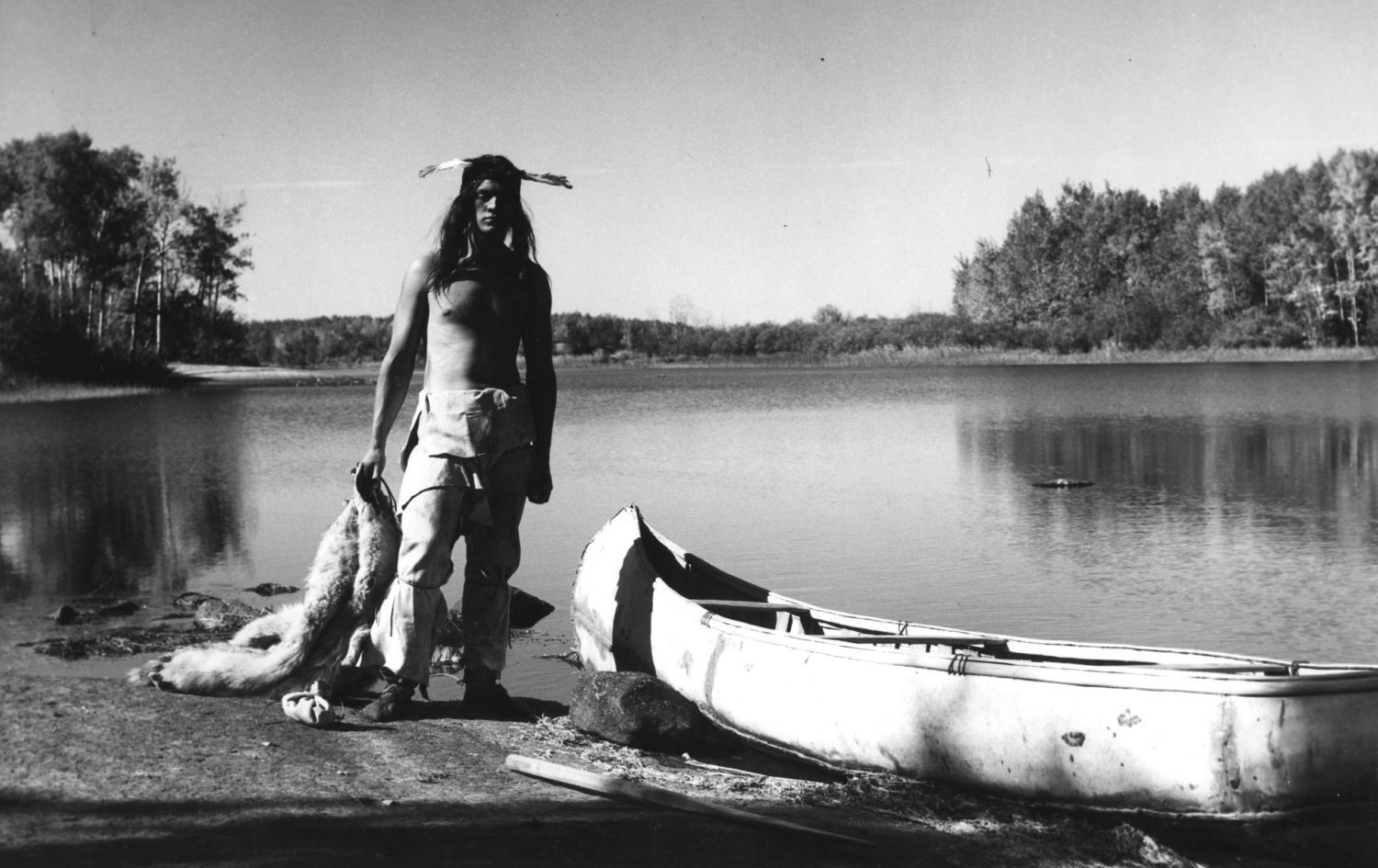At a time when Donald J. Trump is occupying the White House, there are no more anodyne acts. Tweeting scientific facts is resistance. Replacing European and American masterpieces with those made by artists from Middle Eastern countries, as the MOMA has done, is a pied-de-nez. And, touring a series of exhibitions dedicated to Black protest movements strengthens one’s resolve to challenge the “System.” The works that are part of Power to the People: Photography and Video of Repression and Black Protest currently on view at the Ryerson Image Centre and the Gladstone Hotel educate, enrage, and inspire.
The centerpiece ‘Attica 1971: Images and Sounds of a Rebellion’ could have easily been merely a foray into the past, to a time when prisoners a notorious facility in upstate New York united to demand better detention conditions. Yet, to approach it as such would deny the insurrection its place in a still unfolding history. In other words, Attica doesn’t exist in a vacuum. As proof, Philippe Artières, the show’s curator, cites parallels between iconic images made a few years earlier and those that came out of Attica: “The photo of hundreds of convicts, most of them Black, raising their fist in the penitentiary’s courtyard has the same incongruity, the same revolutionary strength as the Black Power salute captured during the 1968 Olympics. And, the picture taken three days later in the very same place of a row of naked men with their hands on their head walking next to dozens of corpses recall the harrowing scenes from the My Lai massacre, which galvanized the public opinion against the Vietnam War.” These visual analogs prompted him to dedicate three years to surveying the content of numerous archives including the New York Public Library, and the collection of Elizabeth Fink, a tenacious civil rights and defense lawyer, as well as scour popular culture for references to the rebellion.
His findings are displayed as fragments of troubled times. Posters designed by the likes of Robert Rauschenberg and the John Lennon-Yoko Ono duo, remind the viewer, upon entering the space, of the dissenting mood that permeated America in the late sixties and early seventies. So do Martha Rosler’s photomontages that combine scenes from the conflict found in the press with pictures of homely interiors culled from the pages of a decorating magazine. Similarly, photographic essays on the exploitation of inmate labour by Danny Lyon, and on the Black Panther Party in California by Ruth-Marion Baruch and Pirkle Jones, further elucidate the context in which the prison uprising took place. Throughout the exhibition, there is a succession of pictures, magazine spreads, pamphlets, books written by convicts or their widows and the like, which serve as evidence of what unfolded inside the Attica Correctional Facilities.
The wealth of material is largely due to the inmates’ media-savvy. As soon as they took control of the prison, taking 42 employees hostage, they asked that reporters be allowed inside to bear witness. But by the fourth day, police forces had amassed outside to retake the prison and kept the journalists outside. Tear gas was dropped into the yard and state troopers entered firing. 43 people died, 33 of whom were inmates. There followed a controversial attempt at covering up the state violence. Heather Ann Thompson, author of Blood in the Water: The Attica Prison Uprising of 1971 and Its Legacy, explains how the media failed to apply due diligence, reporting what they were told by officials (and has since been disproven) that the hostages had their throats slit by the convicts, as well as how the legal apparatus was used to hide the truth.
Yet, for all their efforts, the authorities couldn’t fully erase what had happened. The photo record doesn’t lie. John Shearer, working for LIFE captured the immediate aftermath, images taken by multiple unidentified photographers reveal the death toll and the brutality that followed, and Cornell Capa’s pictures, produced for the New York State commission of inquiry, speak to the isolation and dire conditions in which the inmates were kept. At the same time, popular culture commemorated the Attica uprising in songs and films. Muhammad Ali recited a poem he wrote the day after the rebellion ended. Al Pacino, in Dog Day Afternoon, emerges out of a bank holdup, screaming “Attica! Attica!” Charles Mingus renamed one of his compositions Remember Rockefeller at Attica. And so on. All of which can be heard or seen at the RIC. “The exhibition is an attempt to show a polyphonic view of this event. We do not wish to offer a unique reading of this mutiny or to reduce it to one question that haunted and still haunts America and the world,” says Philippe Artières.
Further proof that Attica is part of a much larger history can be seen in the other works that make up Power to the People. A room is dedicated to the events that shook Birmingham, Alabama in 1963. Images from the Black Star Collection, which the RIC holds, show the violent repression of the burgeoning Civil Rights Movement, while a series of conceptual portraits by Dawoud Bey, reminds the viewer of the lives lost in the bombing of the 16th Street Baptist Church. Pictures of Angela Davis and Kathleen Cleaver, two critical but often overlooked feminist figures fighting for black empowerment and liberation, are on rotation, while Adam Pendleton’s film My Education, A Portrait of David Hilliard, recounts the story of a fatal gun battle between members of the Black Panther Party and the Oakland police in 1968. “The RIC is interested in exploring how photography functions in our society,” explains Paul Roth, its director. “How different people use it depending on their purpose and agenda. And how they interpret it.” In this case, the exhibitions demonstrate how combined, various types of imagery, can help us remember.
Yet, as mentioned earlier, to relegate these events from the Sixties and Seventies to bygone days would be a mistake. When Heather Ann Thompson came to give a talk on February 1st, she began by acknowledging that at that very moment an inmate uprising was in progress at Delaware’s James T. Vaughn Correctional Facility. And, across America, Black Lives Matter protests are reminding citizens that inequality and racism are still present. “The idea was to link up the past and the present. While the RIC looks at the history of oppression and violence inflected on black and brown people by the state, and their resistance, we wanted to bring it forward, to look at another generation and a contemporary struggle,” explains Julie Crooks from the Black Artists Network Dialogue who curated No Justice, No Peace, the partner exhibition at the Gladstone. Beyond showing how the Black Lives Matter movement looks, works from Jalani Morgan, Nation Cheung and Zun Lee, call into question some of the precepts that dictate, in photojournalism especially, who gets to represent whom and how that affects what gets shown, and what doesn’t.
Explaining how he approaches a protest, Jalani Morgan says: “I tap into the vibration that brought me there in the first place, not as a photographer, but as a body in that space of solidarity, of rage. Photography is secondary to the experience. I’m not there as an outsider, or a curious onlooker. I’m a participant in that space, that, by chance, make images.” Being part of the community helps make him, or his colleague, Zun Lee, more attuned to the dynamics at play on the ground. When working in Ferguson and in Toronto, Zun Lee, recognised that protests are also a performance in the sense that people act in the way that they want to be seen. This is especially vital when it comes to black protests. When white people take to the street, there is a notion that it is for well-founded reasons, while when people of colour do, there’s a notion of danger, because this group is already seen as violent and angry. That’s why it’s important to turn the lens towards the less “spectacular” moments or those that defy usual stereotypes.
Take Tent City in Toronto. “It wasn’t just about protesting and confronting the police. It was very much about self-care,” recalls Zun Lee. “There were yoga sessions, massages, health services, food being prepared, a DJ playing music and people dancing. As such, it was a celebration of life and Blackness. That is also protest. Why should they not have a good time or take care of themselves and one another if their lives matter? Being taken care of and taking care of someone is an act of resilience and resistance.”
Julie Crooks’ hope is that going to see these shows is the first step towards civil engagement. “If you’re drawn to the images, then you’re drawn to the reality behind them, and maybe, you’re then compelled to take part in a protest, to write to your MP or to the head of the police, to mobilize and to not be inactive,” she says. There are no more anodyne acts.
***
Attica USA 1971: Images and Sounds of a Rebellion
January 18 – April 9, 2017
Curated by Philippe Artières with Le Point du Jour (Cherbourg, France)
Ryerson Image Centre
Power to the People: Photography and Video of Repression and Black Protest is on view at the Ryerson Image Centre until April 9, 2017. Curators tour on February 22nd at 6pm. Artist Talk with Adam Pendleton on March 15th at 7pm. Lecture with Dawoud Bey on March 22nd at 7pm.
No Justice, No Peace: From Ferguson to Toronto is at the Gladstone until February 26.












